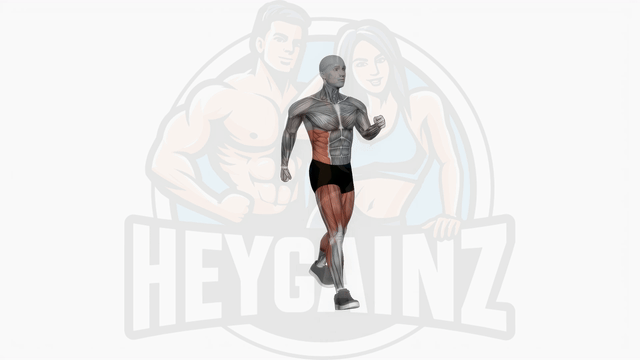
Instructions:
- 1Stand upright with your feet shoulder-width apart.
- 2Start walking with a steady gait by rolling your feet from heels to toes.
- 3Loosely swing your arms alternately while pumping them a little with each stride.
Tips:
- Keep your back straight and avoid slouching.
- Keep your abdominal muscles engaged.
- Maintain a smooth breathing pattern.
Understanding Brisk Walking: Benefits and Techniques
Brisk walking, often referred to as power walking, is a highly effective form of exercise that combines the health benefits of walking with a faster pace. Generally, brisk walking is defined as walking at a speed of about 3 to 4 miles per hour, or at a pace that allows you to talk but not sing comfortably. This intensity helps elevate your heart rate, enhancing cardiovascular fitness and promoting overall well-being.
Benefits of Brisk Walking
Engaging in brisk walking provides numerous benefits:
- Improved Heart Health: By elevating your heart rate, brisk walking strengthens the heart and improves circulation.
- Weight Management: Brisk walking can help in burning calories, making it an excellent choice for those looking to manage their weight.
- Mental Well-Being: Regular brisk walking has been associated with reduced symptoms of anxiety and depression, contributing to improved mood.
- Increased Endurance: Over time, brisk walking can enhance your stamina and energy levels, benefiting your daily activities.
Brisk Walking Speed and Heart Rate
To reap the maximum benefits, it's essential to maintain an appropriate brisk walking speed. Typically, a brisk pace should elevate your heart rate to somewhere between 50% and 70% of your maximum heart rate, depending on your fitness level. For most individuals, this equates to a pace where you can still speak in short sentences but need a bit of effort to do so.
Brisk Walking vs. Jogging
Brisk walking has often been compared to jogging. While both forms of exercise offer significant health benefits, the intensity and impact levels differ. Brisk walking is lower impact, making it more accessible for individuals of various fitness levels, particularly those who may be starting their fitness journey or dealing with joint issues.
Tips for Effective Brisk Walking
To maximize your brisk walking experience, consider the following tips:
- Proper Footwear: Invest in a good pair of walking shoes to provide support and comfort.
- Maintain Good Posture: Keep your head up, shoulders back, and engage your core for optimal walking form.
- Start Slowly: If you're new to brisk walking, begin with shorter distances and gradually increase your pace and distance.
- Mix It Up: Consider using a treadmill for indoor brisk walking, or explore different outdoor routes to keep the experience enjoyable.
Incorporating brisk walking into your daily routine can lead to remarkable changes in your health and fitness levels. For visual inspiration, look for brisk walking videos online to enhance your technique and motivation. Remember, the key to success is consistency and enjoying the process!